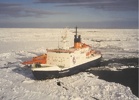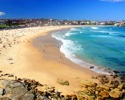 Details of the government’s planned emissions trading scheme (ETS) have been announced. Scoop has all the government speeches and press releases. I’m reading them at the moment, and will comment more later, but here are some highlights:
Details of the government’s planned emissions trading scheme (ETS) have been announced. Scoop has all the government speeches and press releases. I’m reading them at the moment, and will comment more later, but here are some highlights:
- Foresters will receive the full value of carbon credits on new growth (from 1/1/2008) in post-1990 forests.
- Agriculture will not be brought into the scheme until 2013.
- NZ emissions units will be Kyoto-complaint and internationally tradeable (subject to some limits).
- Some units will be allocated free, others auctioned.
- Forestry will be first into the scheme in Jan 2008.
- Transport’s next, in 2009, basically through fuel prices
- Stationery energy (power generation) and heavy industry will enter in 2010, with no free allocation for electricity generators.
- Farmers will get free allocation of units based on 90% of 2005 emissions, but details to be worked out
The government hopes that 90% of power generation will be from renewable sources by 2025. In transport, they want to cut per capita emissions in half by 2040, and encourage the wide use of electric vehicles. Goals for agriculture are more nebulous: to be the world leader in emissions reduction research, and to lead the world in agricultural emissions reductions. In forestry, they would like a net increase of 250,000ha in forest area by 2020.
The government has also released an update on our expected Kyoto deficit – up to 45.5 millions tonnes from 41.2 mT, mainly from increased dairy production. In the absence of any emissions reduction policy, the government projects this could rise to 65mT, but believes the ETS will cut the 2008-12 deficit to 25mT.
My first thought? Politically astute. By getting foresters on board with what amounts to a taxpayer subsidy, they get enough trees planted to offset a large chunk of the Kyoto liability, and buy time to bring agricultural emitters in to the scheme. More later.


